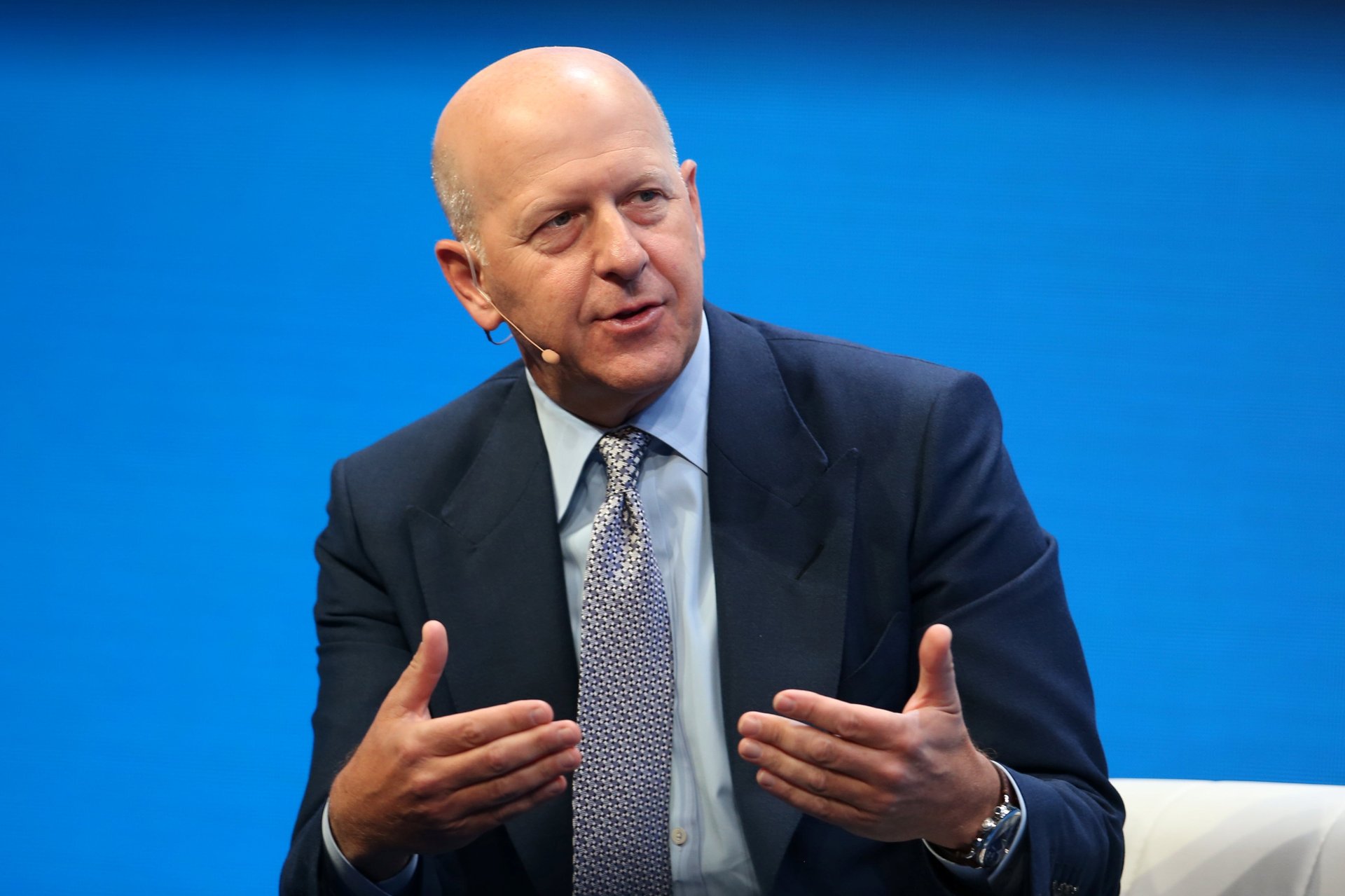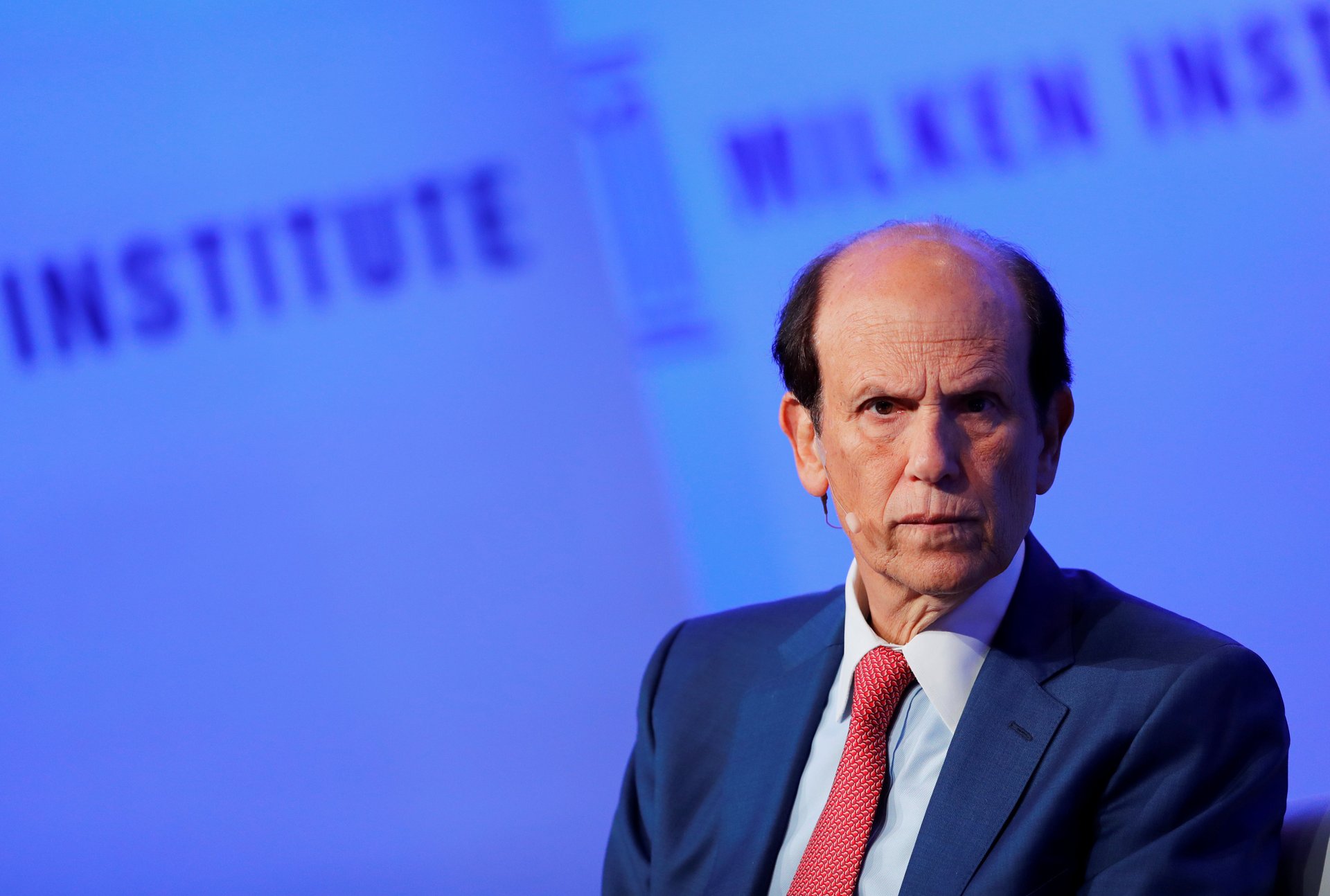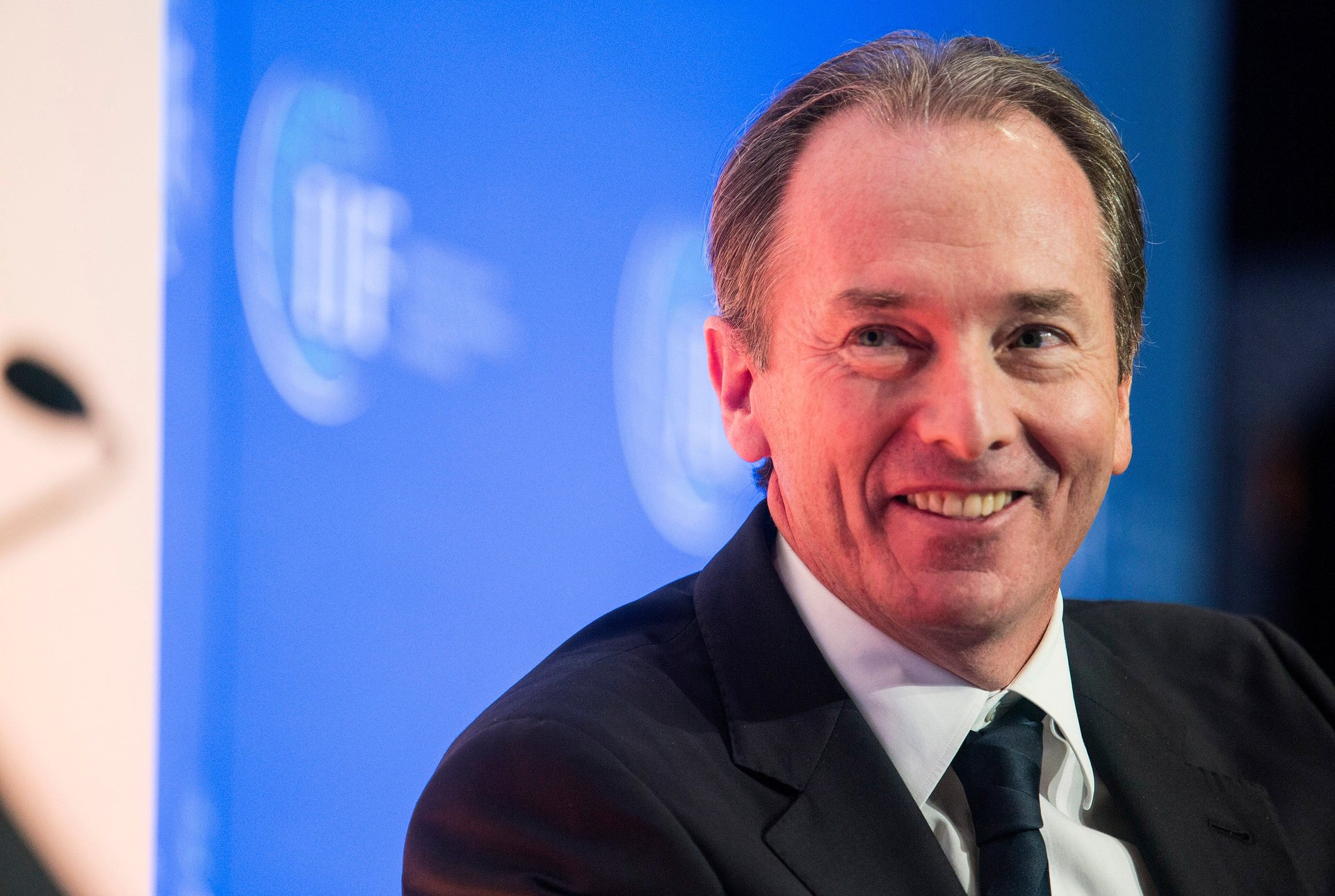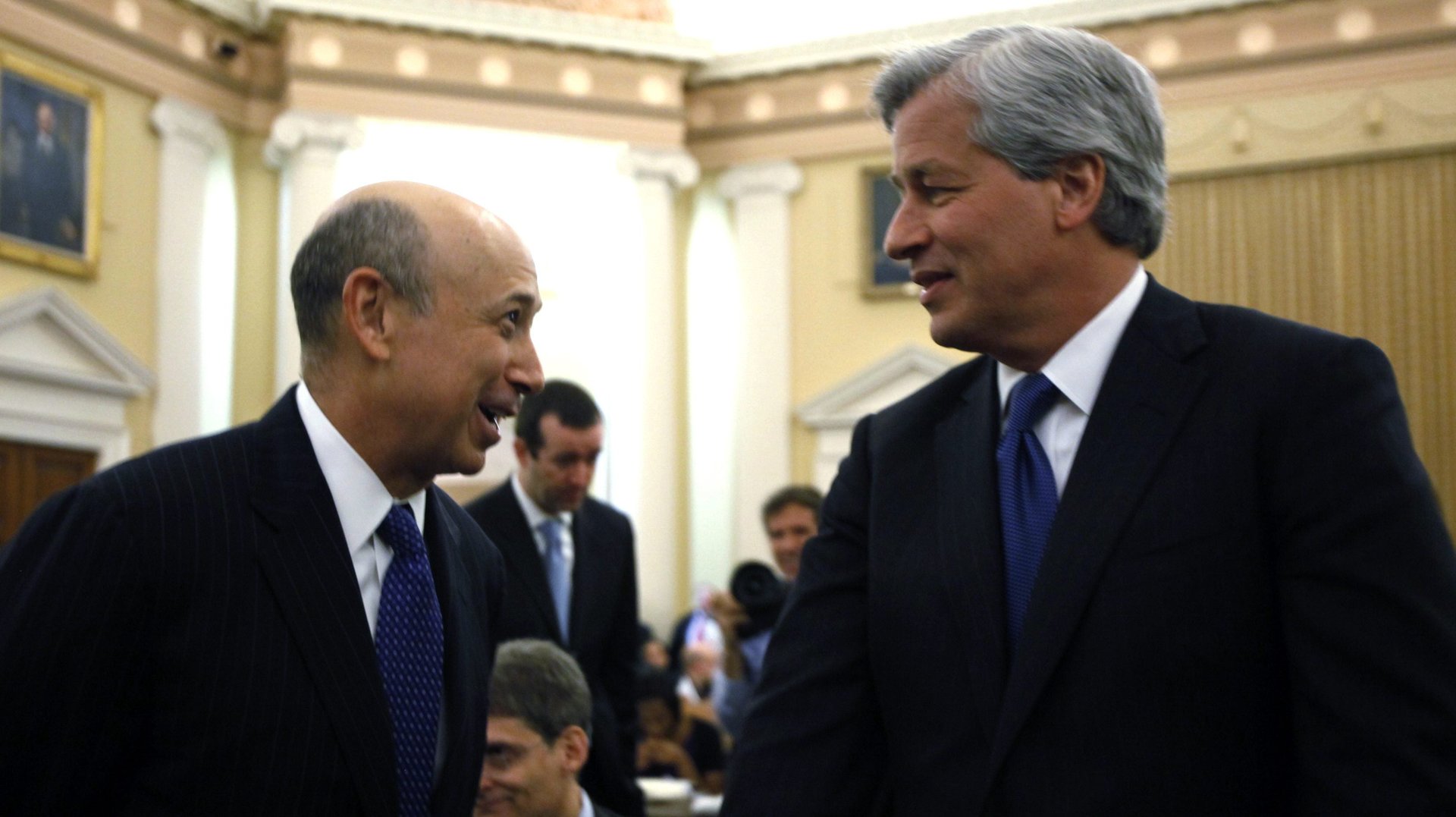Sixteen questions (and answers) about Goldman Sachs
Doesn’t Goldman have a new CEO now?


Doesn’t Goldman have a new CEO now?
Yes. On October 1, David Solomon took over from Lloyd Blankfein, who took over from Hank Paulson after Paulson left to become treasury secretary under US president George W Bush. (Government service is a Goldman tradition.) Like both Blankfein and Paulson, Solomon, 56, is nearly completely bald and proud of it. He looks pretty darn good, too. But that’s where the similarities between Solomon and his two predecessors end.

What’s different about this guy?
I’ve concluded, after years of study, that Goldman Sachs always manages to find precisely the right leader it needs exactly when it needs him (sorry, no “her” yet.) And that’s what Goldman has with Solomon. He has been a partner at Goldman for nearly 20 years, arriving at the firm in September 1999, four months after Goldman’s IPO. Before Goldman, Solomon was a co-head of investment banking at Bear Stearns, and before that, he was at Salomon Brothers, Drexel Burnham Lambert, and what is now Bank of New York Mellon. Whereas Blankfein was a commodities trader from Brooklyn and Paulson was a relationship banker from west of Chicago, Solomon, from Westchester County, has found success in his career helping companies with less than stellar credit ratings raise money in the public capital markets. It is a skill Solomon learned from Mike Milken, Drexel’s “junk bond king,” and then perfected at Bear Stearns.
Mike Milken? The guy who went to prison and was banned for life from the securities industry?
Solomon still has great affection for Milken. “His work ethic and the way he processed information and the way he read and absorbed, it was extraordinary and it still is,” Solomon told me about Milken. “You see him today, you go to his office, and there are papers everywhere that he’s read and marked up. He’s got an incredible ability to digest information, and then synthesize it and communicate around it.”

What’s Solomon’s history at Goldman?
Solomon worked his way up the ladder at Goldman through its capital markets business—raising debt and equity capital for companies around the world—and then through the firm’s highly successful investment banking business.
You said Goldman always gets the CEO it needs. What does it need now?
Solomon’s thorough understanding of the capital markets should prove useful as he has little choice but to transform Goldman from a firm that has relied heavily on its intellectual capital to overwhelm its competition into a firm that has built up its balance sheet and figured out how to make money from money. In short, for Goldman to survive for another 150 years and compete effectively against the likes of JPMorganChase, Bank of America, Morgan Stanley, and Citigroup, it will have to transform itself into a commercial bank that also has an investment bank. Solomon knows this, and it has already started the transformation.
How does Solomon compare to his peers in the finance c-suites?
Solomon has at least one competitive advantage over other Wall Street CEOs: None of the three investment banks for which he once worked–Drexel, Salomon Brothers, and Bear Stearns–exist anymore. That memory alone should keep Solomon on his toes.
Besides a new CEO, Goldman is also living in a new regulatory environment, right?
Definitely. Once upon a time (before the 2008 financial crisis), Goldman could pretty much operate its business free of regulatory oversight. It was an era of so-called “light touch” regulation on Wall Street, coming primarily from the Securities and Exchange Commission. Under that benign regulatory regime, Goldman thrived. It was allowed to trade pretty much whatever it wanted, whenever it wanted. It could make huge proprietary bets with its own capital and build up a massive business—with some $20 billion of capital—investing in private-equity deals.
Or, say, betting against the housing market.
Yep. In the years leading up to the financial crisis, Goldman saw trouble brewing in the market for mortgages and mortgage-related securities and made a clever, multi-billion-dollar bet, using its own money, against the mortgage market. If the market for these securities collapsed, Goldman stood to make a fortune. In 2007, of course, that is exactly what happened. Goldman made a $4 billion profit from its proprietary bet. Its pre-tax profit that year of $17.6 billion was made on revenue of $46 billion, an astounding 38.2% margin. In 2009, Goldman had a pre-tax profit of $19.8 billion—the most in its history—on revenue of $45.2 billion, a nearly 44% margin. It was the year after many of its competitors had evaporated and before the new post-crisis regulatory laws were enacted.
Did those rules hamper Goldman’s earning potential?
It has been downhill for Goldman since. In 2017, for instance, on revenue of $32 billion, Goldman made a pre-tax profit of $11.1 billion, a 35% margin.
Other banks are managing to make good money—what did Goldman get wrong?
Part of the problem for the firm was Lloyd Blankfein’s bet that the Dodd-Frank regulatory reforms (including the Volcker Rule), made law in 2010, would be “cyclical” rather than “structural.” He was hoping that relatively quickly Goldman would be able to return to making big bets with its own as well as other people’s money. But Blankfein bet wrong. Though the reforms are being modified on the margins by President Trump and his regulators, they remain largely intact, with the most severe restrictions still applying to the so-called SIFIs, or Systemically Important Financial Institutions, such as Goldman Sachs and the other big banks.
By contrast, James Gorman, the CEO of Morgan Stanley, took the opposite tack. A former McKinsey consultant, Gorman decided shortly after the new regulations were in place that they were likely to be permanent, not fleeting. He decided to significantly de-risk Morgan Stanley, which almost went bankrupt during the financial crisis, by purchasing Smith Barney, the brokerage firm, from Citigroup. Gorman’s logic was that he wanted Morgan Stanley’s earnings to be less volatile, and much less dependent on trading revenue and profits (or losses). He wanted more recurring revenue. It proved to be the smarter bet. Morgan Stanley’s market capitalization, at around $72 billion, is a few billion dollars more than Goldman’s, at $65 billion. Goldman’s stock was down around 35% in 2018 and was the worst performing stock in the Dow Jones Industrial Average.

Doesn’t sound so good.
Essentially, Goldman is in a box. Its ability to trade for its own account has been greatly curtailed, as has its ability to engage in “market making” on behalf of its clients—the buying and selling of large blocks of securities. Goldman’s trading business, once its cash cow, has fallen on hard times. Revenue in the firm’s bond-trading business was $5.3 billion in 2017, down from nearly $10 billion in 2012. (Which is probably why Blankfein and the Goldman board chose Solomon, the banker, as the next CEO as opposed to a trader.)
What’s going well for Goldman in the midst of all this?
Goldman remains an industry leader in certain business lines, such as in the prestigious role of advising corporate executives on mergers and acquisitions—it is the perennial king—and in the underwriting of corporate debt and equity, where it also can be found among the most successful on Wall Street.
Diversity is a growing issue on Wall Street. How’s Goldman faring on that front?
Solomon seems determined to make Goldman more diverse—he is requiring that half of the new young banking and trading analysts be women, but Goldman still has a way to go to make the firm diverse and inclusive. According to Goldman’s latest numbers, from July 2016, 22% of the firm’s executives and senior “officials and managers” are women, while 82% are white. Only 2.6% of that top group at the firm is black, and only 3.9% is Hispanic or Latino. (Marty Chavez, Goldman’s former chief financial officer and now a vice-chairman, is Hispanic.) Only 5.3% of Goldman’s total workforce of around 37,000 is black, while 37.6% is female. There are three white women and one black man on its 13-member board of directors. Of the 33 members of its management committee, seven are women.
So let’s talk about competitors like JPMC. They haven’t been standing still, exactly.
More fully integrated competitors such as JPMorganChase and Bank of America—with leading commercial banking and investment banking franchises, as well as dominant businesses in credit cards, asset management, wealth management, and mortgage finance—have been making money hand over first, thanks to a growing economy and cheap supply of cash that enables these firms to make money from money.
JPMorganChase, for one, has been raking it in. It has averaged a net income of around $8.5 billion per quarter, close to $32 billion in profit per year. It has a market capitalization of around $330 billion. Bank of America, which bought Merrill Lynch ten years ago to round out its commercial banking and investment banking product suite, has a market capitalization of around $250 billion. No one is going to feel sorry for Goldman Sachs or its 37,000 employees, but there is little question anymore that, with a quarter to a fifth of those banks’ market capitalizations, the company is in need of a strategic fix.

So what’s Goldman going to do?
Goldman has a plan to generate $5 billion in new revenue by 2020. It has already generated about half that desired increase so far in 2018. Though it won’t be opening any bank branches on your street corner, Goldman has made a concerted effort to tap into Main Street, through its online bank, dubbed Marcus, after the company’s founder Marcus Goldman. Marcus now has about two million customers who can either borrow small amounts of money to pay off credit-card debt or make deposits into online accounts, earning around 2% in annual interest, about 10-times more than JPMorganChase offers its depositors.
How’s that working out?
Through Marcus, Goldman now has about $30 billion in deposits (a tiny fraction of JPMorganChase’s $1.5 trillion in deposits) and has lent out more than $4 billion to refinance credit card debt. According to an internal memo, Goldman is considering merging Marcus with its $1.5 trillion wealth management business. Solomon has also been keen on increasing Goldman’s corporate loan book. Under Solomon’s direction, Goldman has some $100 billion of loans on its balance sheet (or that once were on its balance sheet, as Wall Street loves to package up loans and sell them off to investors), up from $30 billion a few years ago. Solomon has told me he would also like to see Goldman get into the business of managing cash for corporations on a short-term basis. It’s all part of Solomon’s plan to make Goldman look more like its big, commercial banking competitors. It’s a far cry from Goldman’s roots as a smart risk-taking investment banking partnership, but we’re also a long way from 1869.
These all seem like incremental steps. Does Goldman need to do something more transformative to compete with these other Wall Street behemoths?
The easiest way for Goldman to better compete would be through a major merger or acquisition. Among the firms that Goldman might consider buying to get a bigger balance sheet are PNC Financial (market cap $56 billion); State Street Corporation (market cap $25 billion), Key Bank ($16 billion), or Bank of New York Mellon ($48 billion). But it’s a high-wire act for Goldman, for many reasons.
Why?
First, the last thing Goldman wants or needs is more investment bankers or investment banking assets. Hence the appeal of the companies listed above with commercial banking and asset management businesses that would complement Goldman’s investment banking orientation. The other problem is that Goldman has a lousy record of making acquisitions. It has only made a few in its long history and none of those have worked out particularly well.
The truth is Goldman is an insular culture, where the talent is mostly homegrown—notwithstanding Solomon’s mongrel resume—and outsiders have had a tough time fitting in or succeeding. (Although one acquisition, that of J. Aron, in 1981, while not well-executed or well-integrated into Goldman, did produce future leaders such as Blankfein, Gary Cohn, and Harvey Schwartz.)
The other big problem for Goldman on the acquisition front is the Federal Reserve, Goldman’s prudential regulator. Ever since September 2008, when at the height of the panic after the bankruptcy of Lehman Brothers both Goldman Sachs and Morgan Stanley became bank-holding companies under the supervision of the Federal Reserve, Goldman has not been able to even think about making a big acquisition. Such an idea has been a regulatory no-no for a decade. But where once Daniel Tarullo, the Fed’s chief Wall Street regulator, would never have considered allowing a big bank merger, Randy Quarles, a former private equity partner who Trump appointed to replace Tarullo, may be more accommodating to Wall Street about strategic mergers. It’s a bit of a shadow dance at the moment, and none of the big banks has dared suggest a big merger to Quarles (at least publicly). Solomon told me, though, he is hopeful the mood in Washington toward bank deals is changing. If he’s right, Goldman could, and probably should, pounce.